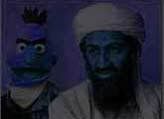| Find |
Thursday, 9 August 2007
The Hiroshima Cover-Up
 A story that the U.S. government hoped would never see the light of day finally has been published, 60 years after it was spiked by military censors. The discovery of reporter George Weller's firsthand account of conditions in post-nuclear Nagasaki sheds light on one of the great journalistic betrayals of the last century: the cover-up of the effects of the atomic bombing on Japan.
A story that the U.S. government hoped would never see the light of day finally has been published, 60 years after it was spiked by military censors. The discovery of reporter George Weller's firsthand account of conditions in post-nuclear Nagasaki sheds light on one of the great journalistic betrayals of the last century: the cover-up of the effects of the atomic bombing on Japan.On Aug. 6, 1945, the U.S. dropped an atomic bomb on Hiroshima; three days later, Nagasaki was hit. Gen. Douglas MacArthur promptly declared southern Japan off-limits, barring the news media. More than 200,000 people died in the atomic bombings of the cities, but no Western journalist witnessed the aftermath and told the story. Instead, the world's media obediently crowded onto the battleship USS Missouri off the coast of Japan to cover the Japanese surrender.
A month after the bombings, two reporters defied General MacArthur and struck out on their own. Mr. Weller, of the Chicago Daily News, took row boats and trains to reach devastated Nagasaki. Independent journalist Wilfred Burchett rode a train for 30 hours and walked into the charred remains of Hiroshima.
Both men encountered nightmare worlds. Mr. Burchett sat down on a chunk of rubble with his Baby Hermes typewriter. His dispatch began: "In Hiroshima, 30 days after the first atomic bomb destroyed the city and shook the world, people are still dying, mysteriously and horribly - people who were uninjured in the cataclysm from an unknown something which I can only describe as the atomic plague." More...
Posted at
16:39
![]()
Post Title: The Hiroshima Cover-Up
Subscribe to:
![[Zionazis-1.jpg]](https://blogger.googleusercontent.com/img/b/R29vZ2xl/AVvXsEg_x8DOGucgHQmfJJujuK_oYJdxhEnskhQqt-Og7lSk52HeaDQYzW8NQWfdpHmPgj_FJN0jJ3tz1prR1jVZHdHky2HDQxxcs4LVxX0DtAt3fG0sfRr6MDx7Sz8cJNjl0k0RS9TbCjangQ/s1600/Zionazis-1.jpg)




